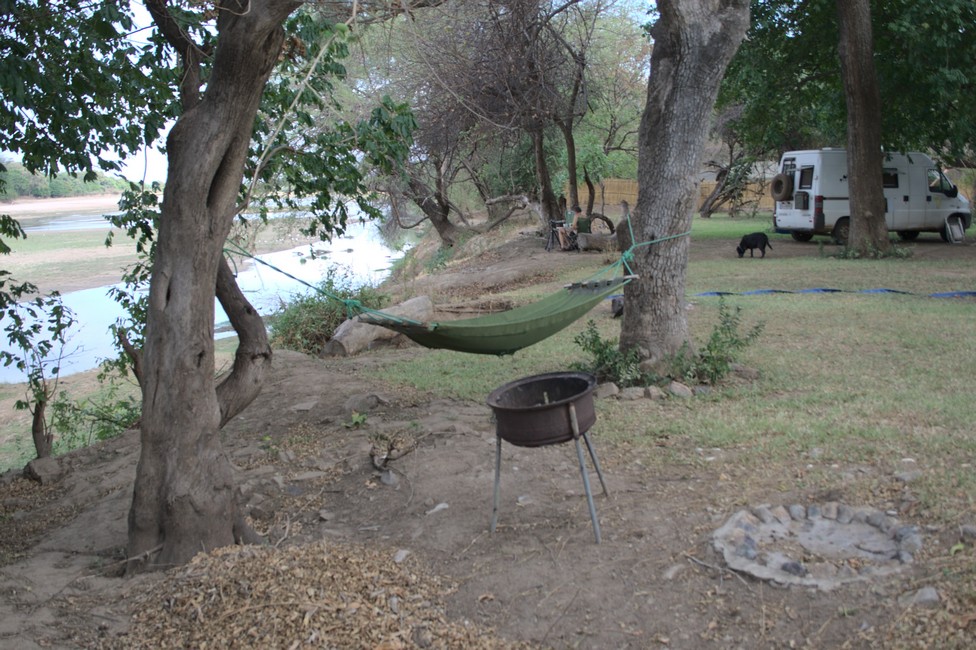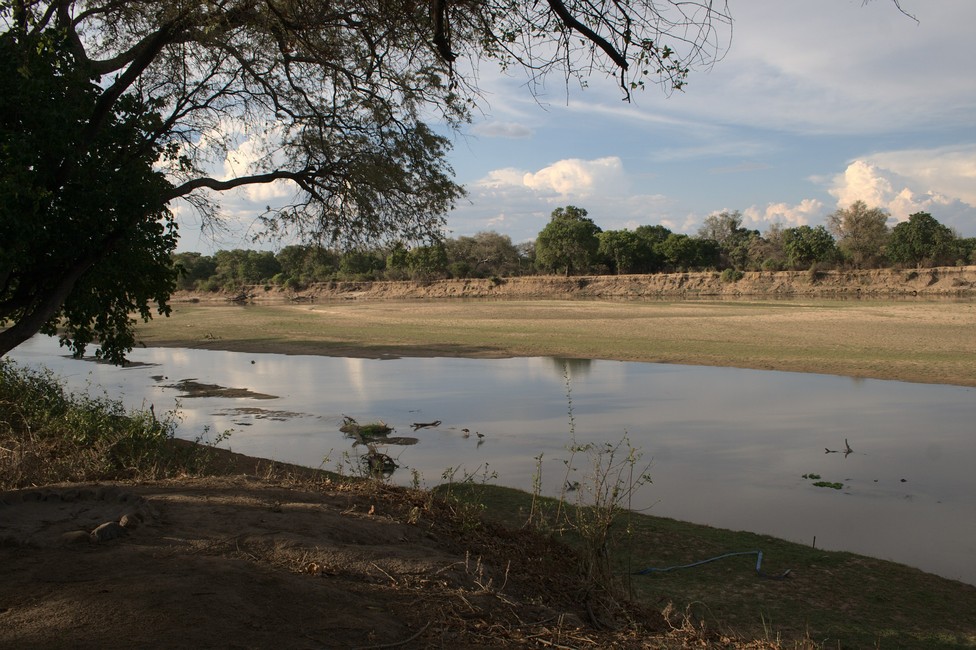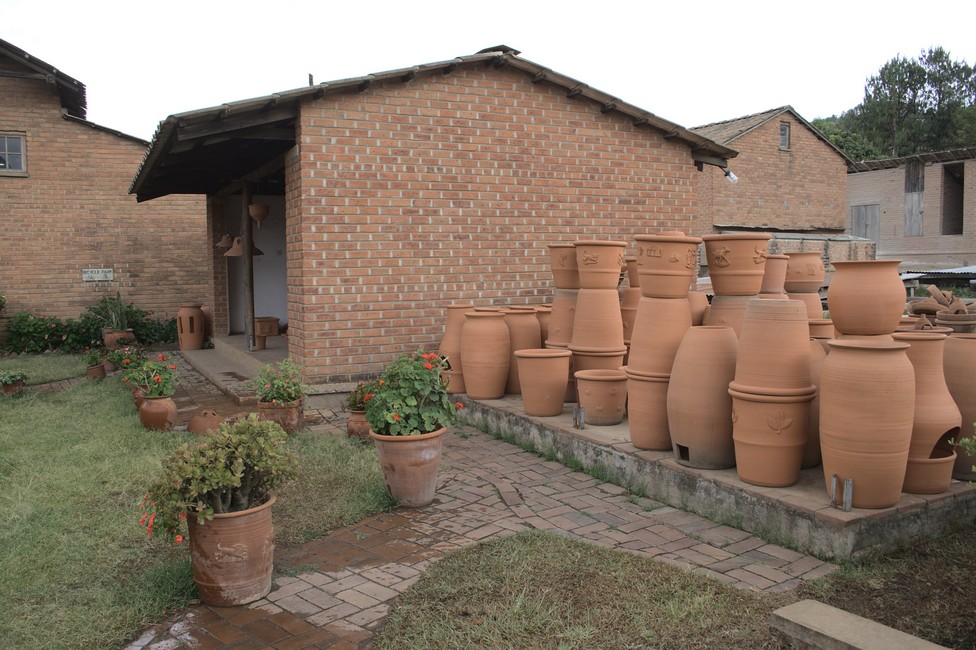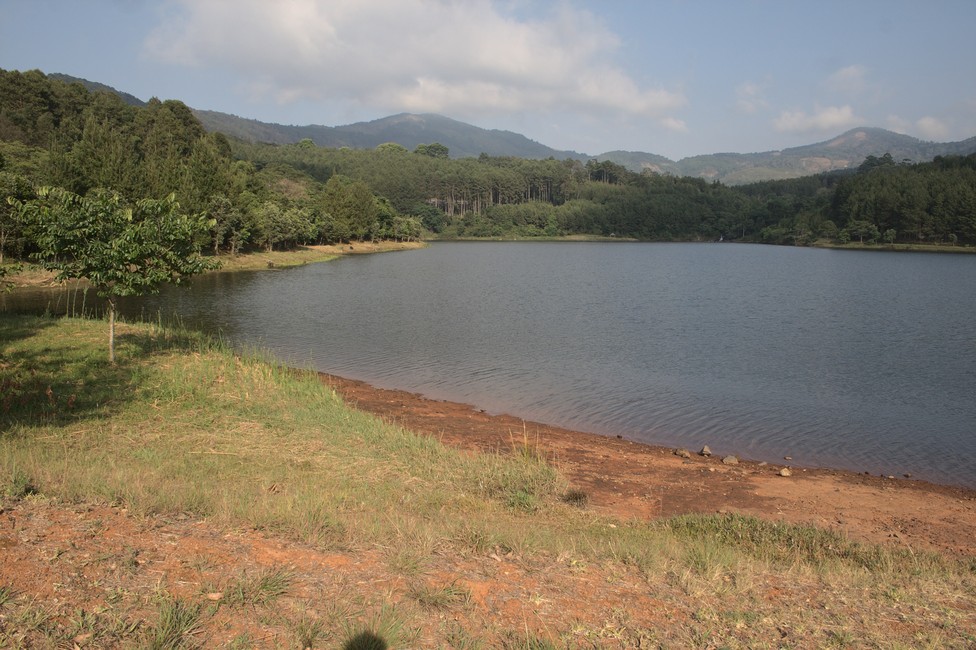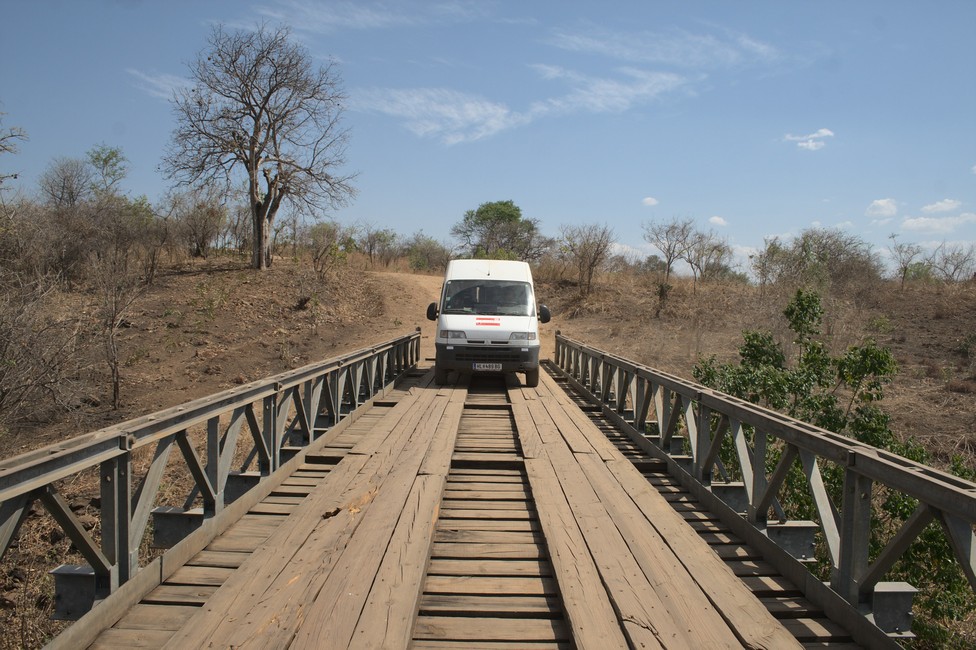The next morning we drive to a different section of the South Luangwa National Park. To make the confusion complete the whole park is called Luangwa National Park, which consists of a Northern and Southern Part. We want to continue south along the river, but the bridge is washed away, so we turn and settle on the Wildlife Camp Site.

Here the river forms at the opposite bank flat access to the water, which promises good wildlife viewing. But it’s only noon, we have to wait for the late afternoon.

Luangwa National Park is a wildlife reserve located in eastern Zambia, in the Luangwa River Valley. It covers an area of over 9,000 square kilometers and is one of the most remote and unspoiled wilderness areas in Africa. The park is home to a diverse array of wildlife, including elephants, lions, leopards, giraffes, hippos, crocodiles, and over 400 species of birds.
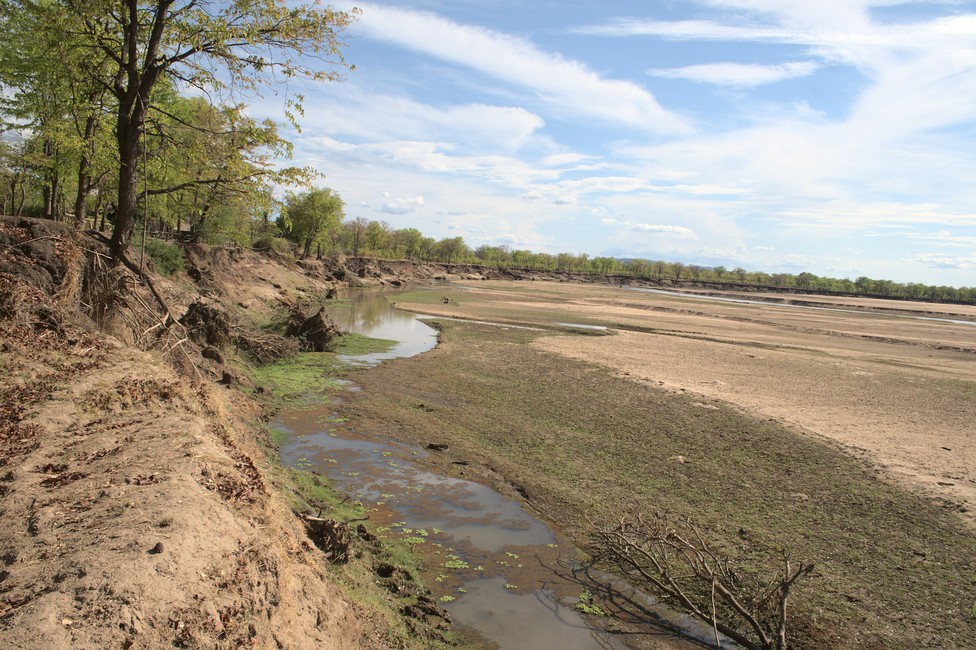
Luangwa National Park is renowned for its walking safaris, which allow visitors to experience the park’s wildlife and stunning scenery on foot. These safaris are led by experienced guides and offer a unique and immersive experience of the African bush.

The park is also famous for its night safaris, which offer the opportunity to see nocturnal animals such as hyenas, genets, civets, and leopard hunting. Game drives, canoe safaris, and birding tours are also available, providing a variety of ways to experience the park’s wildlife.

Overall, Luangwa National Park is a must-visit destination for anyone interested in wildlife and nature, offering a chance to experience the beauty and diversity of African wildlife in its natural habitat.
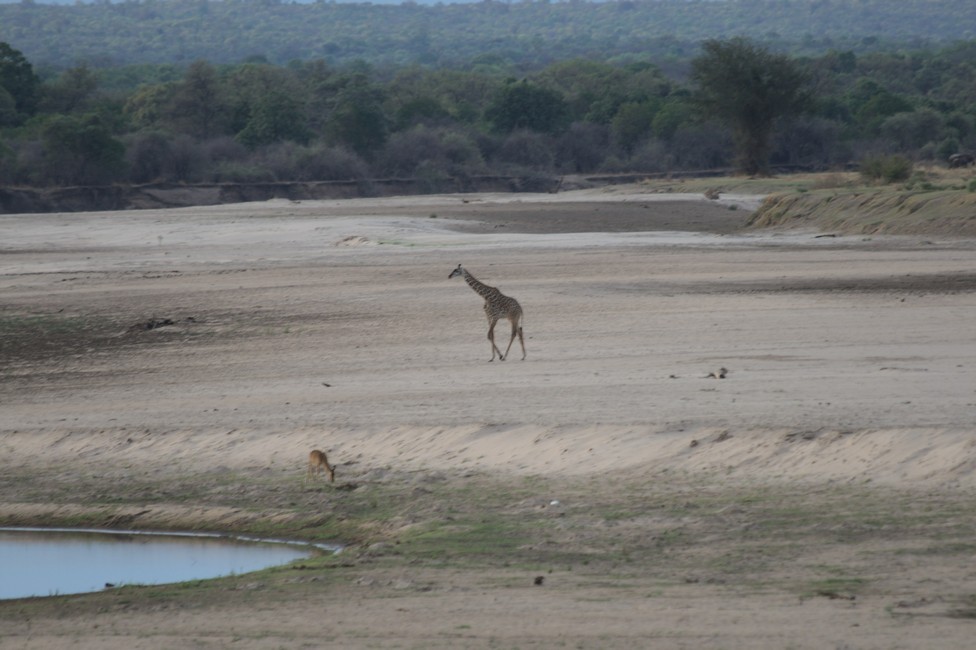
At about 5 o’ clock, the first antelope appear at the water holes of the river. A lone hippopotamus in the distance comes out to graze on land. A group of giraffes hesitantly approaches the water. Here are the Thomicroft’s giraffe, it is more delicate than their relatives, and has a darker, distinct spot pattern, which is lost in the bright legs.

It is evening and we heat our Tanzanian charcoal barbecue. Today, there are delicious grilled steaks. As usual with a glass of wine, we enjoy the evening atmosphere.


